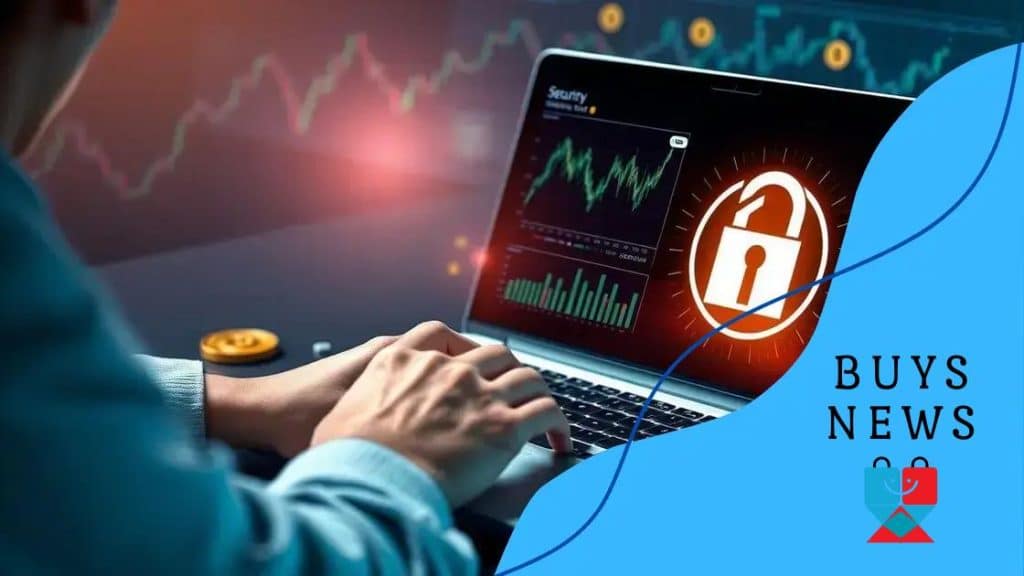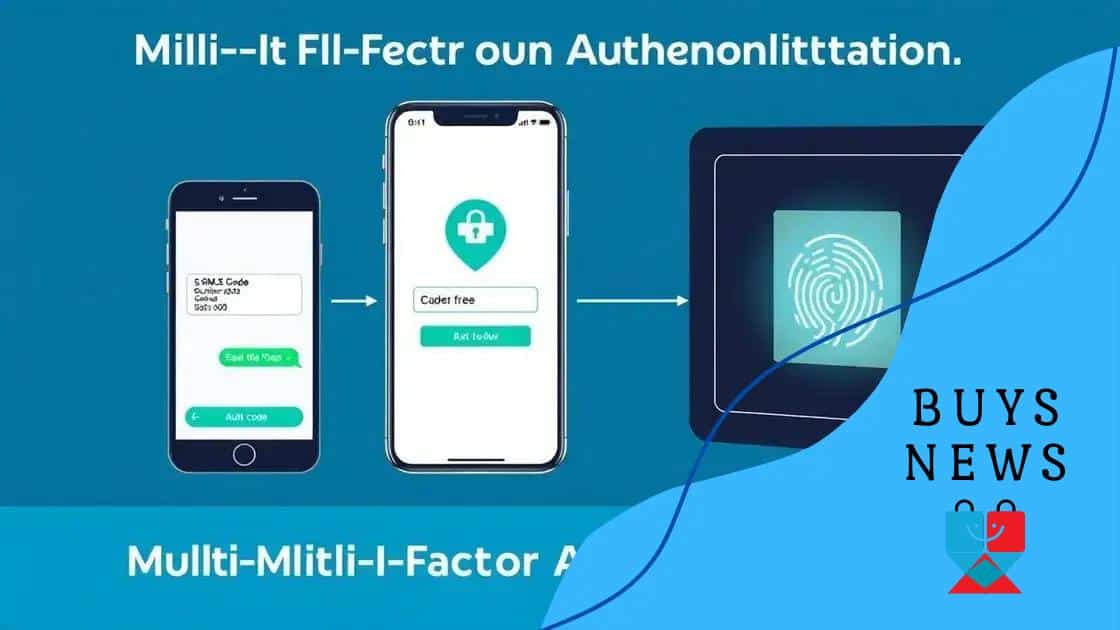Cryptocurrency security best practices for your peace of mind

To ensure cryptocurrency security, implement best practices such as using secure wallets, enabling multi-factor authentication, keeping software updated, and being cautious during trades to protect your investments from various threats.
Cryptocurrency security best practices are crucial for anyone investing in digital currencies. With the rise in cybercrime, it’s essential to stay informed. How prepared are you to protect your assets?
Understanding common cryptocurrency threats
In the world of cryptocurrency, understanding common threats is the first step towards securing your investments. As digital currencies grow in popularity, so do the tactics used by cybercriminals. By familiarizing yourself with these threats, you can take proactive steps to enhance your security measures.
Types of Cryptocurrency Threats
Cyber threats come in various forms, making it crucial to stay vigilant. Attackers continuously innovate their methods, targeting both individual users and exchanges. Here are some of the most prevalent threats:
- Phishing attacks: This involves deceiving users into providing sensitive information, often through fake websites or emails.
- Malware: Harmful software can infect devices, leading to unauthorized access to your wallets.
- Exchange hacks: Cryptocurrency exchanges can be lucrative targets for hackers looking to steal funds.
- Ransomware: Some attackers may hold your cryptocurrency hostage until a ransom is paid.
Recognizing these threats is essential in the fight against cybercrime. By implementing strong security protocols, you can minimize your risk. Two-factor authentication and keeping your software updated can significantly enhance your defenses.
Staying Informed
Staying informed about potential threats is just as vital as securing your assets. Regularly read news articles and follow credible sources concerning cybersecurity in the cryptocurrency space. Participate in forums and engage with the community to learn about the latest scam alerts and malware sightings.
Importance of secure wallets
The importance of secure wallets in cryptocurrency cannot be overstated. A wallet acts like a bank account for your digital assets, and it plays a crucial role in their protection. By using a secure wallet, you ensure that your investments are safe from potential threats.
Types of Cryptocurrency Wallets
There are several types of cryptocurrency wallets, each with its own pros and cons. Knowing which type to use can greatly affect your security:
- Hardware wallets: These are physical devices that store your private keys offline. They are one of the safest options for securing your assets.
- Software wallets: These can be desktop or mobile applications. While they are convenient, they can also be more vulnerable to hacking.
- Paper wallets: This is a physical paper printout of your private and public keys. It offers great security if stored correctly, but it can be easily lost or damaged.
- Web wallets: These are online services where you can store your cryptocurrency. While they offer easy access, they pose higher risks as they are often targeted by hackers.
Choosing the right wallet is critical for your digital assets’ safety. Be sure to do research and select a reputable option. A well-chosen wallet can help safeguard against hacks and fraud.
Best Practices for Using Wallets
To maximize your wallet’s security, follow these best practices. Always keep your software updated to defend against vulnerabilities. Enable two-factor authentication whenever possible. Additionally, never share your private keys; they are essential for accessing your funds and should remain confidential. Regularly back up your wallet data to ensure you can recover it in case of loss.
Multi-factor authentication techniques

Multi-factor authentication (MFA) techniques are essential practices for enhancing the security of your cryptocurrency accounts. By requiring more than just a password, MFA adds an extra layer of protection against unauthorized access.
Understanding MFA
MFA works by combining two or more independent credentials: what you know (password), what you have (a mobile device), and what you are (biometric data). This approach significantly decreases the likelihood of unauthorized access.
- SMS confirmation: A code is sent to your mobile device, which you must enter to access your account.
- Email verification: An email with a verification link is sent when logging in from a new device.
- Authentication apps: Applications like Google Authenticator generate time-sensitive codes for login.
- Biometric authentication: Fingerprints or facial recognition provide secure access based on unique physical traits.
Implementing MFA is a straightforward yet powerful way to safeguard your digital assets. It’s important to choose methods that best fit your needs and ensure you have more than one backup method.
Tips for Using MFA Effectively
To maximize the benefits of MFA, use strong and unique passwords alongside your authentication methods. Regularly update your methods to keep them secure. Furthermore, be cautious of phishing attempts. Only enter your authentication codes on sites you trust. If using an authentication app, consider using a hardware security key for added protection.
Regular software updates and patches
Regular software updates and patches are critical components of maintaining cryptocurrency security. Keeping your software up to date helps protect your digital assets from vulnerabilities that hackers may exploit.
Why Software Updates Matter
Software updates often contain essential fixes for known security flaws. When you update your wallet or trading platform, you’re effectively closing doors that hackers could use to gain access to your accounts.
- Fix security vulnerabilities: Updates address issues that could be targeted by cybercriminals.
- Improve functionality: New updates can enhance performance, making your wallet or platform more user-friendly.
- Stay compliant: Some updates ensure your software meets regulatory requirements, protecting you from legal issues.
Failing to install these updates may leave your system open to attacks. Many users don’t realize how common it is for hackers to exploit these vulnerabilities until it is too late. Regularly checking for updates should be a priority.
How to Manage Software Updates
To effectively manage software updates, enable automatic updates whenever possible. This ensures you receive the latest security patches without having to think about it. If you prefer manual updates, set a reminder to check for updates at least once a month. Remember, using outdated software significantly increases your risk of falling victim to cyber threats.
Best practices for trading securely
Best practices for trading securely are essential for anyone involved in cryptocurrency transactions. By following certain guidelines, you can protect yourself from fraud and keep your investments safe.
Choosing Reputable Exchanges
First, it is crucial to choose a reputable exchange for trading. Research different platforms and look for user reviews. Select exchanges with strong security measures and a good track record. Some platforms also offer insurance against hacks, adding another layer of security.
- Verify security features: Ensure the exchange uses two-factor authentication and encryption.
- Check regulatory compliance: Make sure the exchange adheres to local laws and regulations.
- Research the team: A transparent team with a good reputation can boost your confidence in the exchange.
Once you’ve chosen an exchange, always enable security features like two-factor authentication. This simple step can significantly reduce the risk of unauthorized access to your account.
Best Practices During Trading
While trading, be cautious of your surroundings. Avoid using public Wi-Fi networks, as they can be insecure. Instead, use a private, secure connection. It’s also wise to keep your devices updated with the latest security patches. Consistent updates help protect against cyber threats.
Additionally, be mindful of phishing scams. Always double-check URLs before entering sensitive information. Phishing scams may use fake websites to steal your personal data. When in doubt, directly type the URL of your exchange into your browser instead of clicking on links.
FAQ – Questions about Cryptocurrency Security Best Practices
What are the best practices for storing cryptocurrencies?
Using secure wallets, especially hardware wallets, and enabling multi-factor authentication can greatly enhance the safety of your digital assets.
How often should I update my cryptocurrency wallet?
Regular updates are critical. You should check for updates at least once a month to address security vulnerabilities.
What is multi-factor authentication and why is it important?
Multi-factor authentication adds an extra layer of security by requiring more than just a password, reducing the risk of unauthorized access to your accounts.
How can I protect myself from phishing scams?
Always verify website URLs and never click on suspicious links. Using only trusted websites and enabling MFA can help safeguard your information.





